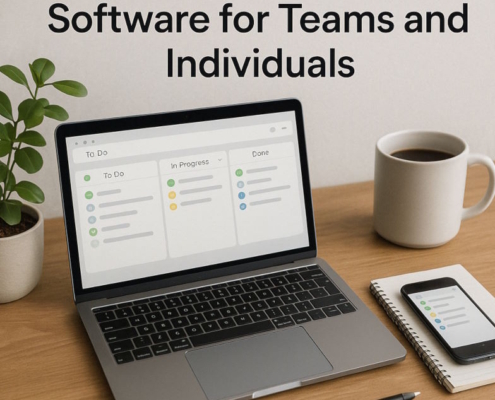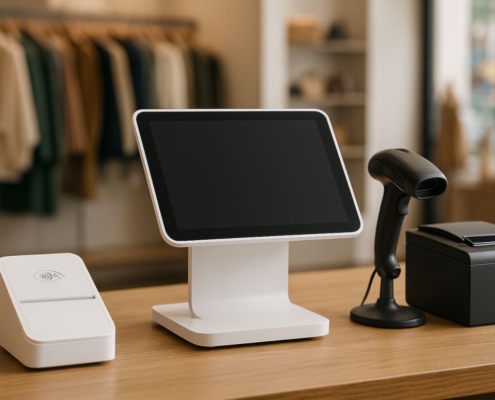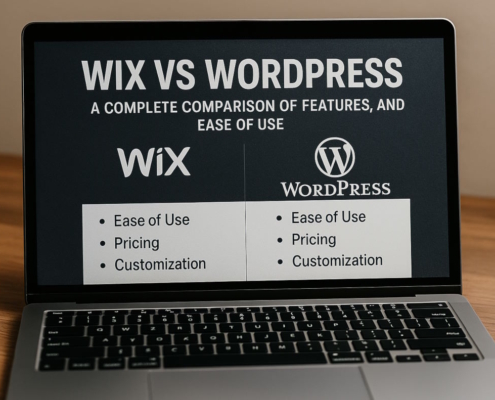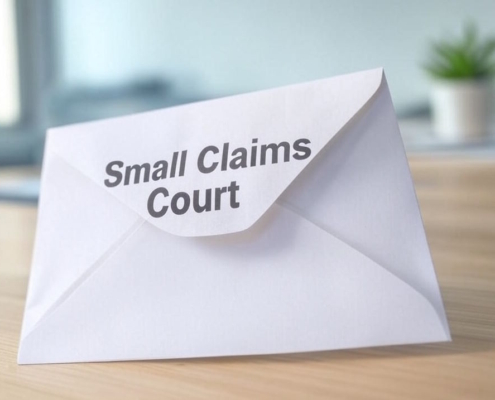What is a 1099 form?
Businesses are required to report payments made for services rendered to the Internal Revenue Service (IRS) through the filing of information returns. In this context, the character of the service provider—whether they are an employee or an independent contractor—determines the sort of information return that is used.
It is the responsibility of the company for whom the job is done to submit the information return. With the use of these forms, the IRS can verify that service providers are accurately reporting employee income and that the business is paying taxes on employment for service providers who are employed by the firm.
When you get money from someone who isn’t your employer, you’ll need to fill out one of the IRS 1099 forms to prove it. The company that is responsible for paying the money will fill out the form with the necessary information and then submit copies of the form to both you and the Internal Revenue Service.
All payments made throughout the tax year are detailed on this form. Your state’s tax office may also receive a copy in some cases. It is the payer’s responsibility to complete and send you the correct Form 1099 tax form. The IRS has a January 31st deadline for the majority of 1099 forms. There are cases where February 15 is the specified date.
Why would you need a 1099 Form?
A 1099 Form shows payments you got from someone who isn’t usually your boss. Anyone or any organization, even the state, can fall under this category. A variety of income kinds and their respective sources are detailed on separate Forms 1099. Some examples of such payments are interest, dividends, payment for non-employees, and payouts from retirement plans.
You must include any income you receive on a 1099 form in your tax return.
Who gets a Form 1099?
Here are a few typical situations in which you could receive a Form 1099:
- If you received at least $600 in nonemployee pay from an entity other than your usual employer, you are required to submit a Form 1099-NEC.
- If your rent or royalty payments were $600 or more, you are required to fill out Form 1099-MISC.
- If you were reimbursed for state or local taxes in the preceding year, you are required to get Form 1099-G.
- In a similar vein, you are required by law to provide a Form 1099-NEC to each non-employee you paid $600 or more to in the course of your trade or company that year.
Who sends out 1099s?
Payments made between people or companies can be recorded using one of several different kinds of 1099 forms. A variety of 1099 forms can be issued for various purposes.
The 1099-NEC, which pertains to payments made for Nonemployee Compensation, is among the most widely used 1099 forms. If you’re self-employed or work as a freelancer, you can get a Form 1099-NEC that details the money that someone paid you at various points throughout the year.
In most cases, the 1099-NEC is not necessary for payers who make Nonemployee Compensation payments under $600, unless the payer withholds taxes from the payments. But it’s up to them if they want to. You must still disclose any income, even if it’s less than $600, on your tax return.
When are the 1099s sent out?
The various 1099 forms have varied due dates. The deadline for Form 1099-NEC, for instance, is January 31st. In the event that January 31st falls on a non-business day, the deadline will be extended to the subsequent business day.
If you are the one responsible for sending out 1099 forms:
- January 31 is the deadline for most 1099 forms.
- The standard deadline for submitting Form 1099 by regular mail to the IRS is February 28.
- If you file your Form 1099-NEC electronically or by paper, you have until January 31 to get it to the IRS and the receivers.
- Payers are obligated to provide you with this paperwork at the start of tax season. This allows you plenty of time to get your tax return ready. Also, it gives the IRS proof of some of the money you made during the tax year.
You are not required to submit your individual income tax return until the tax filing deadline, even if these documents are due early for payers.
The IRS is able to confirm the income people claim on their tax forms because of the early due dates. Thus, the IRS is able to more readily identify cases of refund fraud.
How Are Forms 1099 and W-2 Different?
One key distinction between the W-2 and Form 1099 is the information that is included:
The 1099-NEC is only used to pay freelancers and independent workers. This form does not record any tax payments.
In addition to taxable pay, the W-2 form includes federal (and, if necessary, state) income tax and Federal Insurance Contributions Act (FICA) withholding, reduced salary amounts for 401(k) plan contributions and other types of employee benefit plans, as well as additional withholding (for example, for state disability benefits in some states or paid medical and family leave benefits in some states). It also lists different employee benefits, such as health insurance, group term life insurance, and help with child care.
Form W-2 is used to record payments made to employees, such as wages, whereas Form 1099-NEC is used to report payments made to independent contractors. Every company has to decide if their staff are considered employees or independent contractors so they can fill out the right paperwork.
Employers may find it more cost-effective to use independent contractors rather than full-time workers. You can save money by not paying employment taxes or providing benefits to independent contractors. You can also save money on administrative expenses.
Classifying employees, however, is not a subjective issue. If the employer has enough say over the worker’s schedule, location, and methods of production, the worker cannot be considered an independent contractor for federal tax reasons and is instead considered an employee. When determining whether an individual is considered an employee for tax reasons, the Internal Revenue Service (IRS) employs a battery of criteria based on their conduct, finances, and relationships.
As opposed to employees, independent contractors run their own businesses. Typically, they are in charge of the timing and method of their job, have access to their own equipment and tools, and take on the risk of making or losing money on every assignment.
When dealing with independent contractors, are there any more forms that are required?
In order to pay and tax your contractors correctly, you need more than just Form 1099.
1. Form W-9 from the IRS
In order to get a contractor’s TIN, a business requires a W-9 form. That way, when tax time rolls around, the right money goes to the right person or company, and the IRS gets the right data. Contractors are required to provide either their Social Security number or their employer’s TIN on the form. If the contractor or the Internal Revenue Service ever have any issues, you should keep this independent contractor tax form on file for at least four years.
2. Which party is responsible for filling out the W-9 form?
Along with any other needed information, the independent contractor should fill out the W-9 and send it back to the company.
3. When should you fill out Form W-9?
When beginning a contract with a new business, contractors should complete this form.
4. When is the last day to submit Form W-9?
The IRS does not have a specific due date for W-9 forms. Instead, it is the responsibility of the company paying the independent contractor to save the form and use the provided data to make sure that the right amount of compensation is paid.
5. Form 1096 from the IRS
Form 1096 is a reporting document that provides a summary of the informative returns that a company has submitted. No one other than the IRS has access to this form; it is not sent to independent contractors.
6. Who fills out Form 1096?
The business that makes Form 1099 would also make Form 1096. If the business is filing its informative returns on paper, it must also complete and submit this form. For information on how to file it electronically, see IRS Publication 1220.
7. When should you fill out Form 1096?
You should finish it up before the end of the year when you are required to file Form 1099-NEC for non-employee compensation.
8. When is the Form 1096 due date?
The last day to send in Form 1096 summarizing 1099-NEC forms that report non-employee pay is January 31. When planning your tax reporting schedule, be sure to double-check each year for any changes to the deadlines for additional forms of informational filings.
Is it Possible for a Person to Receive Both a W-2 and a 1099?
It is possible for the same individual to get both a W-2 and a 1099. Take the hypothetical case of a person who has the dual position of officer and employee with a company and also happens to be a member of the board of directors. As a corporate director (a non-employee position), this individual may be eligible to obtain a 1099 for fees paid in addition to a W-2 for worker compensation.
Why Should Employers Pay Attention to How the IRS Classifies Their Employees?
For compliance with federal, state, and local employment rules and regulations, it is critical for small businesses to accurately categorize their employees as independent contractors according to the IRS test and other criteria. The employer may be liable for back wages, employment taxes, and employee benefits (such as health insurance and retirement payments) if the worker is wrongly classified as an independent contractor.
Misclassification of workers can lead to a buildup of fines for unpaid employment taxes. The IRS will usually look back three years for taxes that haven’t been paid.
What will happen if you don’t file a Form W-2 in 2024?
Each form will cost $60 if submitted within 30 days of the due date, $130 if submitted after 30 days but before August 1, and $330 if submitted after August 1. The amounts of these penalties can be increased every year to account for inflation.
- The consequence for not withholding wages: A total of 1.5% of pay + interest.
- FICA contribution: 40% of the total.
- Company’s portion of FICA: one hundred percent.
- Failure to pay taxes: 0.5% of the outstanding tax balance every month (up to 25% of the total tax debt).
Imagine for a second that the Internal Revenue Service suspects fraud or that your company intends to evade paying employment taxes by misclassifying your employees. In such a scenario, you may be subject to penalties that include twenty percent of the salary paid in addition to the full amount of FICA (one hundred percent of the employee and employer share). Individual owners may be responsible for paying income taxes and the FICA contribution that workers should have had taken out of their pay.
Furthermore, the Internal Revenue Service has the authority to pursue criminal fines of up to $1,000 for every employee who is wrongfully categorized. In addition, misclassification of workers can result in penalties imposed by the United States Department of Labor.
You might be able to avoid employment tax fines with Section 530 relief. For companies who have paid contractors on 1099s, regularly reported workers, and had a good cause to consider them as independent contractors, this permits them to avoid employment tax penalties that come from worker misclassification. Reclassifying independent contractors as employees is an option available through the IRS’s Voluntary Classification Settlement Program (VCSP), which can help reduce fines.
Employee Classification Tests (1099 vs. W-2)
Some of your employees may leave you wondering if they are legally considered employees, independent contractors, or freelancers.
1. IRS Common Law Rules
To figure out whether an individual is properly classified as an employee or an independent contractor for federal tax purposes, the Internal Revenue Service (IRS) uses certain guidelines.
How does your organization manage and oversee the employee’s work? Does the employee get detailed instructions and training?
Does the business supply its employees with equipment, materials, and a way to pay for their expenses? This would suggest financial control.
What kind of relationship does the worker have with the company? Does the worker have a formal contract or other privileges and perks that indicate that they are an important part of the company?
Provide your honest responses to these three questions while keeping the bigger picture in mind; no rule is more important than the others. If you’re still not sure, it’s probably best to call the person an employee.
2. DOL Economic Reality Test
The U.S. Department of Labor also offers assistance with worker categorization. As a whole, and according to the DOL itself, the following should serve as guidelines for classification:
- Profit or loss potential based on managerial ability
- Worker and company investments
- Duration of the employment partnership
- Control type and level
- How crucial the task is to the company’s operations
- Autonomy and competence
There has been a legal revision to the DOL’s Final Rules regarding independent contractors, so keep that in mind.
3. EEOC Classification of Workers
When deciding whether someone is an employee or not, the United States Equal Employment Opportunity Commission uses its own criteria. On top of all the aspects just mentioned, there are a few more to think about, such as:
- Is the worker able to employ and compensate assistants?
- Is the person running their own company or job?
- Is it possible for the employer to fire the employee?
- Do both the worker and the supervisor think they have a relationship as boss and employee?
4. ABC Test by State
Some states determine if an employee is eligible for state-specific benefits, such as unemployment insurance or wage and hour regulations, by applying what is known as the “ABC test.” A person is considered an employee unless each of the three conditions are met:
- Lack of control: The company does not directly tell the person what to do for work.
- Work is uncommon: The worker works off-site or on projects that are not part of the organization’s regular operations.
- Normally engaged: The worker does work on their own that is similar to the work they do for the company, maybe for other companies or in the same established trade.
Protect Your Company from Tax Liability by Accurately Reporting W-2 Employees and 1099 Workers
You can keep your company out of IRS hot water by properly categorizing your employees and reporting payments made to them. To ensure that your company pays its employees in a way that complies with IRS regulations, it should choose a reliable payroll services provider.






























